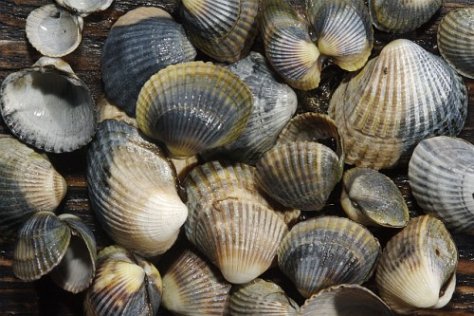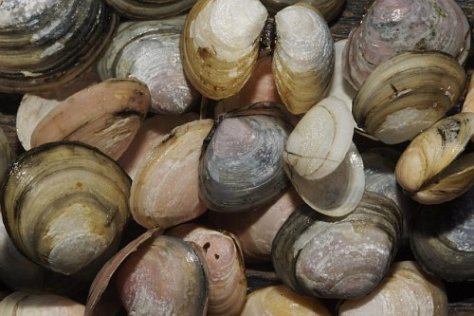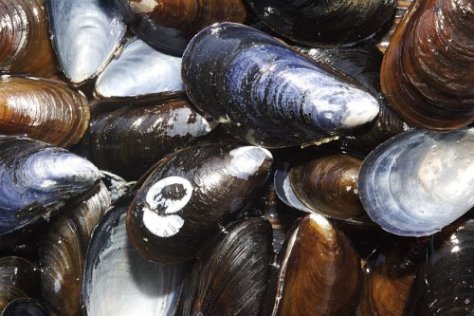Whose shell halves do we find in the shore sands?
Photos: Tiit Hunt
Translation: Liis
Lagoon cockle Söödav südakarp Cerastoderma glaucum
Baltic clam; Baltic macoma Balti lamekarp Macoma balthica
Soft-shell clam Liiva uurikarp Mya arenaria
Blue mussel, common mussel Söödav rannakarp Mytilus edulis
Beach weather time has arrived and children often ask about the shell halves that have been washed up on the shore sands: where do they live, what do they do? The shell halves of the bivalve shellfish living in our waters are joined by a ligament and the bivalves control it with internal closing muscles. The shell halves of water-living bivalve shellfish are a little ajar so that water and of course the plankton in it and oxygen can easily be taken up by the “fringes“ at the edges of the shells.
In case of danger the bivalve at once closes its shell.
The edible lagoon cockle is the most common bivalve in our shore waters. The longest side of the shell is about three centimetres, with a ribbed and grooved whitish body. It usually inhabits relatively shallow sea water, depths up to ten metres rarely more. When necessary it digs itself down into sandy bottoms but it can move on its foot, even making small jumps. Feeds on small animals or scraps, bacteria covering sand grains, also on diatoms and bluegreen algae. Among fish lagoon cockles are food for flounders and turbot. Among birds, for the diving ducks.
The Baltic macomas are pinkish or white in colour, the shell is thin and fragile, about two and a half centimetres in the longest direction. They prefer shallow brackish water and dig down into the bottom mud of the top layers, filtering for food there. They tolerate a decrease in the salt content of sea water best among the bivalves, living in shallow water areas (depths up to 40 m). Many fish species feed on the Baltic macomas and it is estimated to be the most common of our sea bivalves.
The soft-shell carp is the largest, with a whitish shell up to ten centimetres long, a foreign species that has arrived here with the ballast water of ships. It is heat-loving, lives to a depth of up to forty metres and is already comparatively numerous here.
The common or edible mussel is oblong, the front end tapers off markedly. The colour of the shell is blackish blue and the length two-three centimetres. Edible mussels live in sometimes quite large colonies fastening to hard bottoms with threads of a horn-like material (byssus threads). When in place they feed on suspended solids filtered from the water. Among fish they are food for flounder and turbot, and important for eiders among the diving ducks. Many have bought mussels in the shops, the contents in the tins are caught elsewhere in the world for instance in Denmark, where the salt content of the sea water is greater and the mussels of commercial size.












